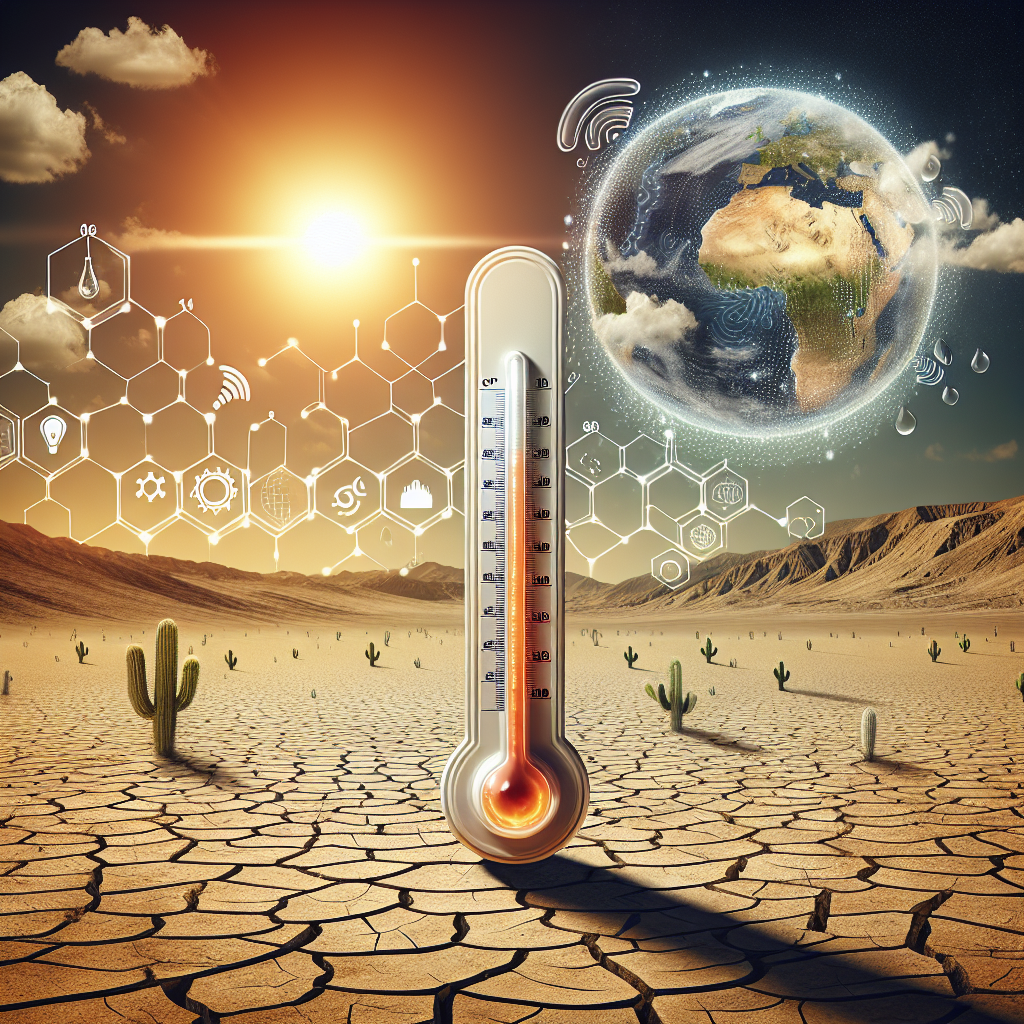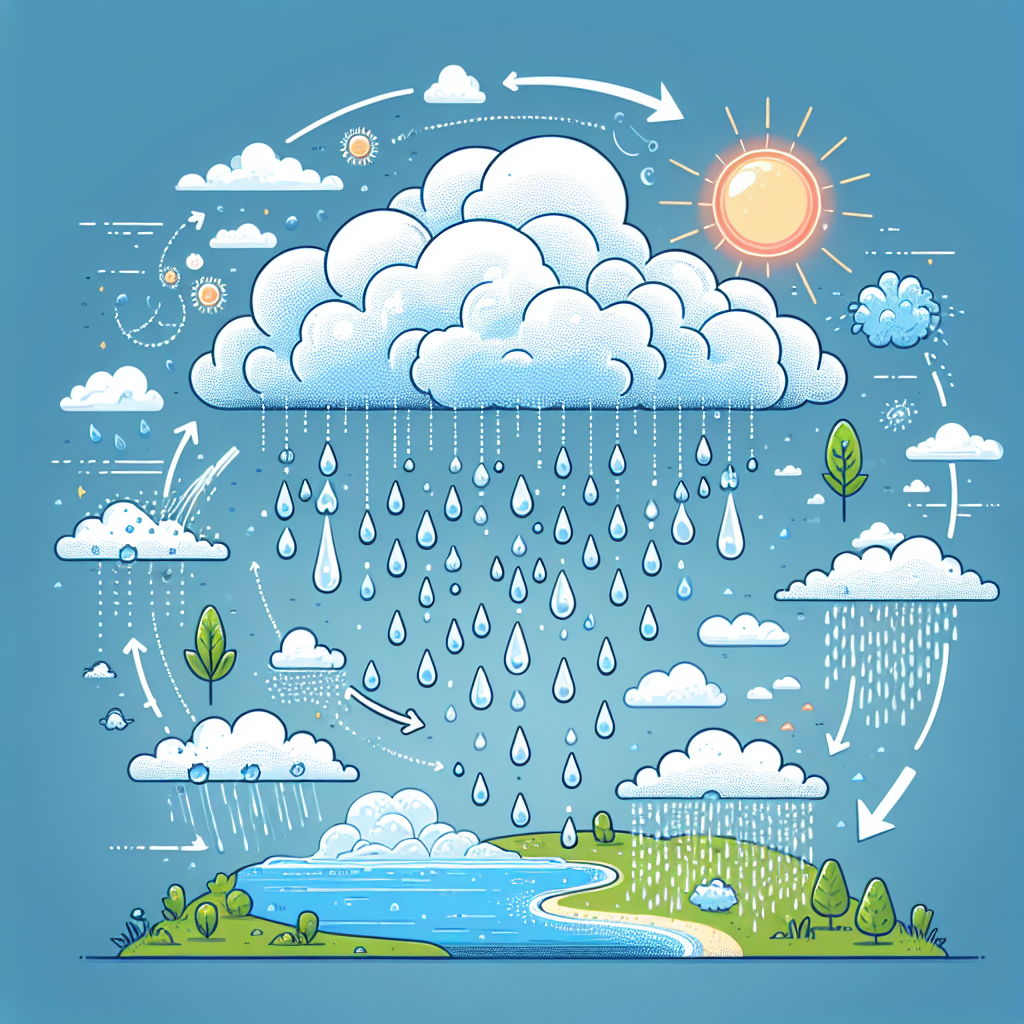The Science of Precipitation: Why It Rains
Understanding Weather Systems
Weather systems play a crucial role in the formation of rain. The earth’s atmosphere is a complex system involving various elements such as temperature, pressure, humidity, and wind patterns. The interplay of these factors leads to the development of clouds and ultimately precipitation.
The Water Cycle
At the core of understanding why it rains is the water cycle. The cycle begins with evaporation, where water from oceans, rivers, and lakes transforms into water vapor due to solar energy. This vapor rises into the atmosphere, cooling as it ascends. As the temperature drops, the water vapor condenses around tiny particles in the air, forming droplets—a process known as condensation.
Cloud Formation
Clouds are formed when water vapor condenses into tiny liquid droplets or ice crystals, depending on the temperature. There are different types of clouds, such as cumulus, stratus, and cirrus, which serve as indicators of weather patterns. When these clouds accumulate enough moisture, they become heavy, and the water droplets combine to form larger droplets.
Types of Rainfall
Rainfall can be categorized into several types based on the processes that lead to precipitation:
Conventional Rainfall: This occurs mainly in tropical regions. The ground heats up due to the sun, causing warm air to rise. As the air ascends, it cools, and the moisture condenses, leading to rain.
Frontal Rainfall: This type occurs when two air masses meet. A warm air mass rises over a cooler air mass, leading to condensation and precipitation. It’s common in temperate regions.
Orographic Rainfall: When moist air encounters mountain ranges, it is forced to rise. As it ascends, it cools, causing condensation and rain. This type of precipitation is significant in mountainous areas.
Cyclonic Rainfall: Associated with low-pressure systems, cyclonic rainfall occurs when warm air is drawn into a low-pressure area, causing it to rise. As the warm air rises, it cools, leading to rainfall.
The Role of Humidity
Humidity is crucial to precipitation. It refers to the amount of water vapor present in the air. When the humidity level is high, the air saturates more readily, increasing the likelihood of rain. Relative humidity, measured as a percentage, indicates how close the air is to saturation. A 100% relative humidity means the maximum amount of water vapor is present at that temperature, leading to increased chances of precipitation.
The Influence of Temperature
Temperature is a key factor in precipitation. The warmer the air, the more water vapor it can hold. When warm air rises and cools, its capacity to hold water vapor decreases, leading to condensation and, eventually, rain. This is particularly evident in thunderstorms, where rapid updrafts can create large amounts of precipitation.
The Importance of Atmospheric Pressure
Atmospheric pressure affects weather patterns and precipitation. Low-pressure systems are generally associated with unstable weather and precipitation, as they promote upward motion in the atmosphere. Conversely, high-pressure systems are generally linked to clear skies and dry conditions. The movement and changes in these pressure systems dictate the formation and intensity of rain.
Weather Fronts
Weather fronts, boundaries between different air masses, are significant in the precipitation process. As warm air rises over a cold front, it condenses, forming clouds and precipitation. Cold fronts tend to cause more intense precipitation over a shorter duration, while warm fronts often lead to prolonged, lighter rains.
Geographic Factors
Geography profoundly influences precipitation patterns. Proximity to large water bodies increases local humidity levels, resulting in more precipitation. Coastal areas often experience more rain than inland regions due to moist air from the ocean. Conversely, rain shadows occur on the leeward side of mountains, where the air descends, warms, and loses moisture, leading to drier conditions.
Climate Change and Rain Patterns
Climate change is having a profound effect on precipitation patterns globally. Warmer temperatures increase evaporation rates, altering humidity and weather systems. This leads to more intense rainfall events and longer dry periods in various regions. The frequency and intensity of storms are also affected, leading to changes in how and when rain occurs.
Weather Prediction Models
Meteorologists use weather prediction models to understand and forecast rainfall. These models simulate atmospheric conditions using complex mathematical equations. By inputting data regarding temperature, humidity, wind patterns, and pressure, meteorologists can predict rainfall and its intensity, helping to issue warnings and prepare for weather events.
Conclusion
Rain is a vital component of Earth’s ecosystem, contributing to freshwater resources and influencing global weather patterns. Understanding the science behind why it rains involves exploring the intricate relationships among atmospheric components, the water cycle, and environmental influences. From cloud formation to the effects of climate change, the dynamics of precipitation reveal the complexity of our planet’s weather systems.
Further Reading and Resources
For those interested in delving deeper into the science of precipitation and meteorology, consider exploring the following resources:
- National Oceanic and Atmospheric Administration (NOAA): NOAA Weather
- The National Weather Service: NWS Precipitation
- The Weather Channel: Understanding Rainfall
By utilizing these resources, you can further enhance your knowledge of rainfall and its implications for our environment and daily life.




















